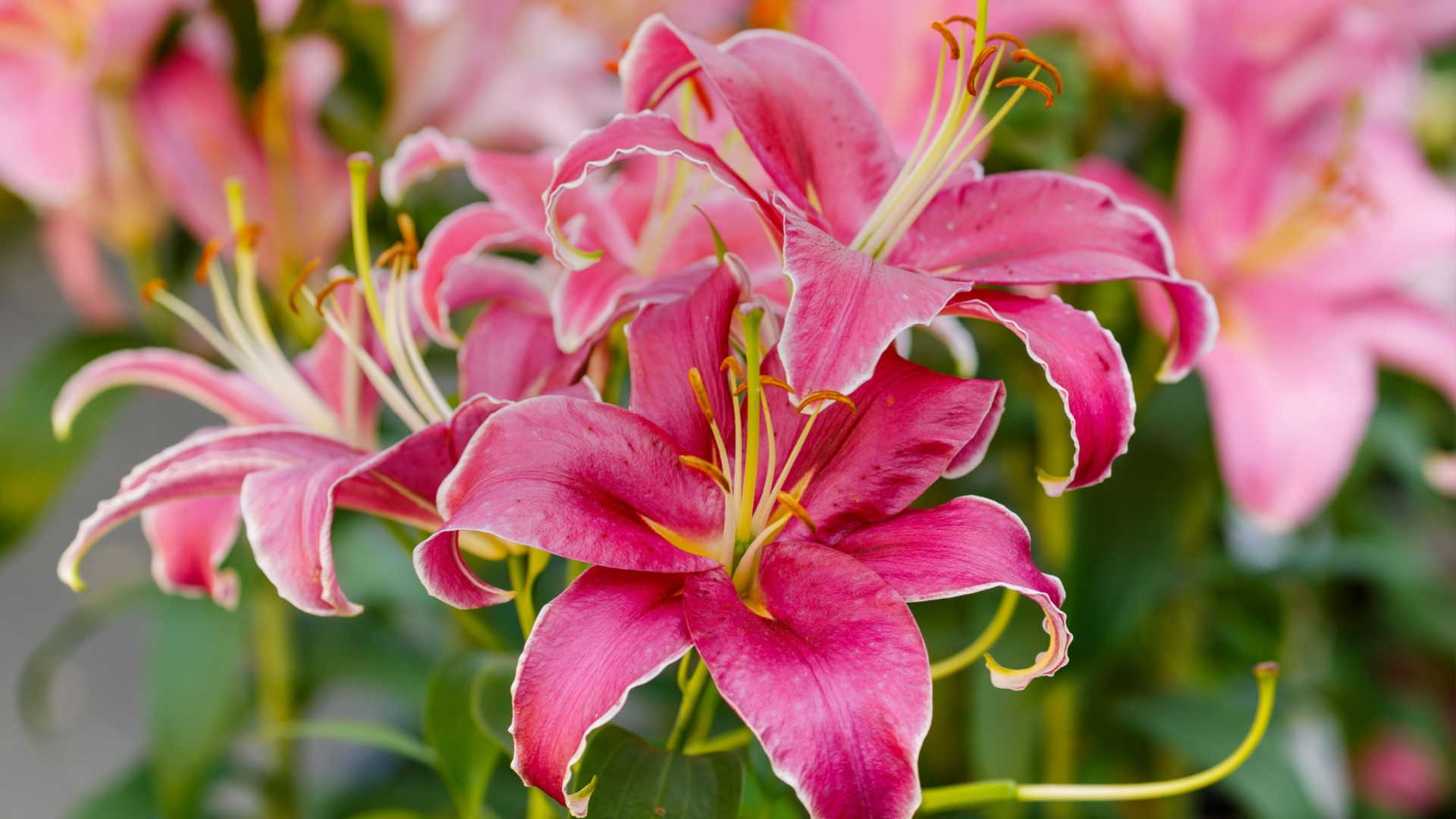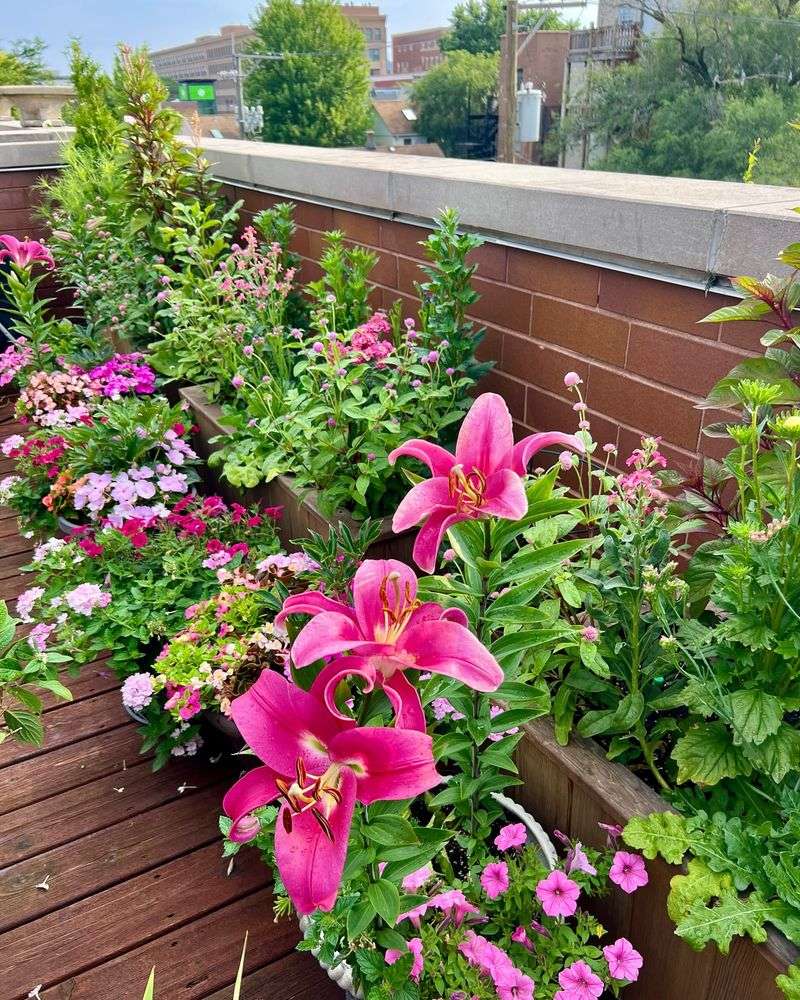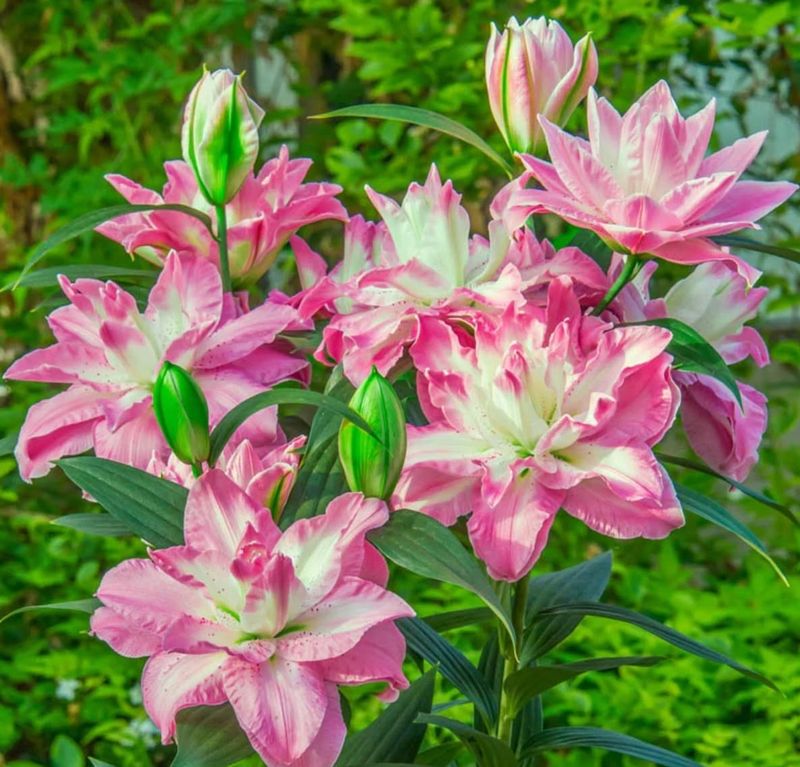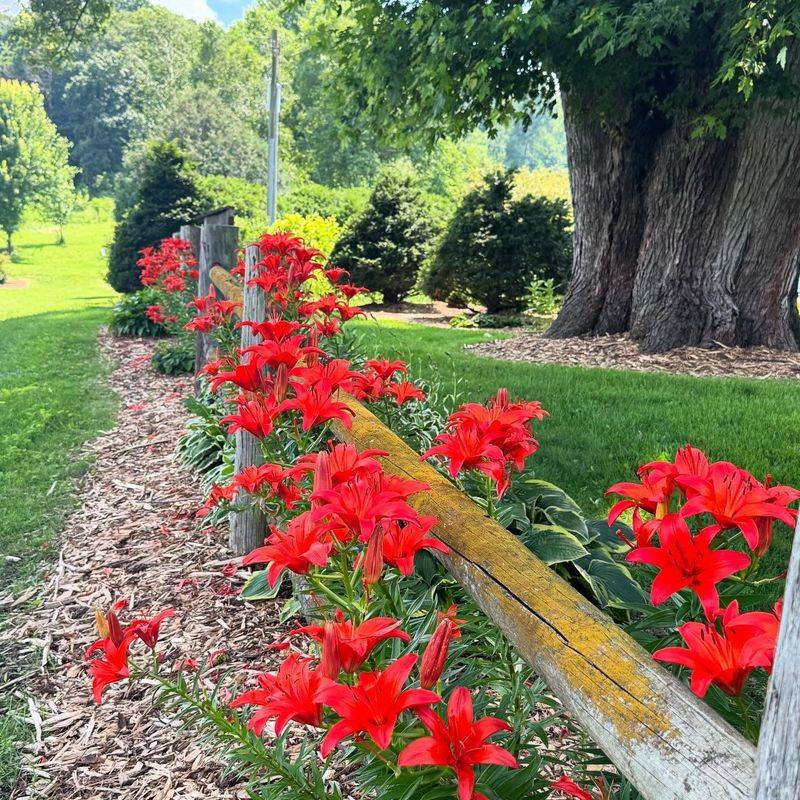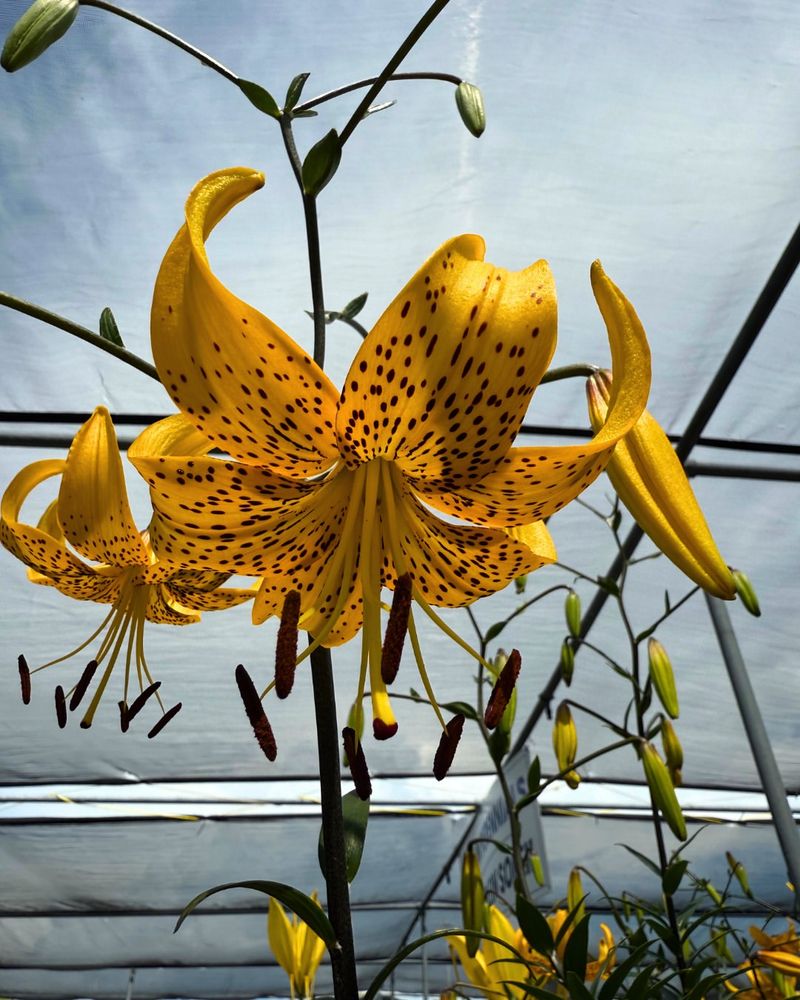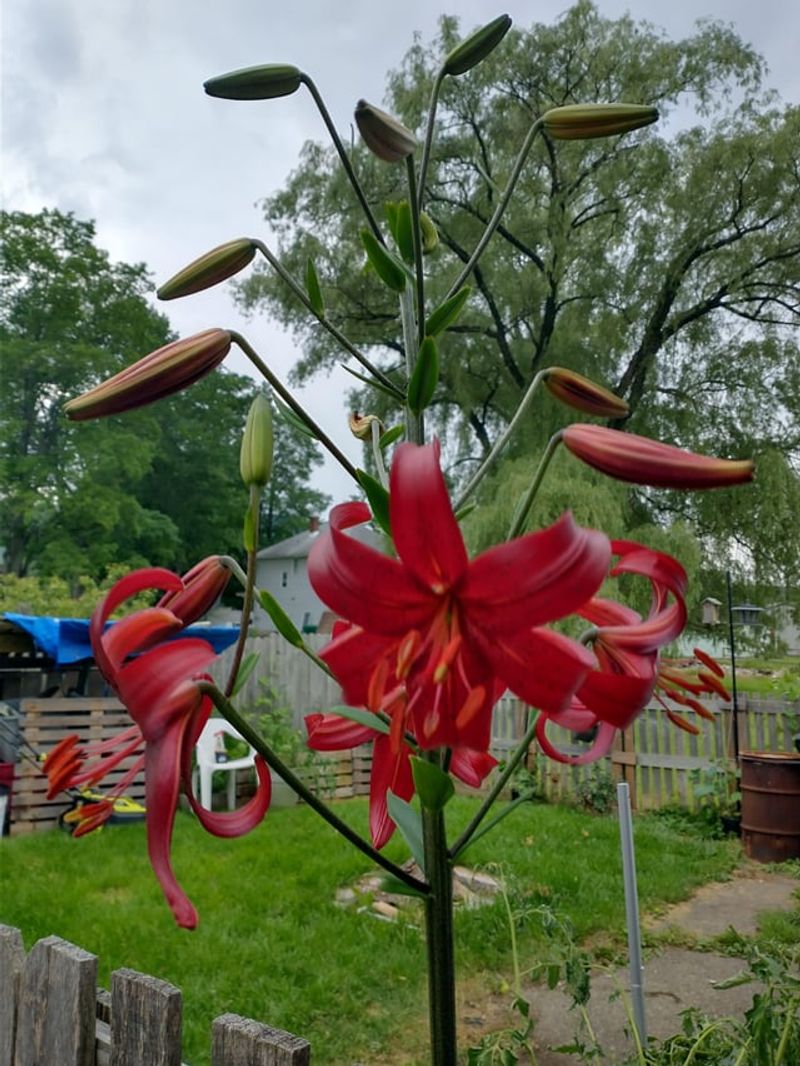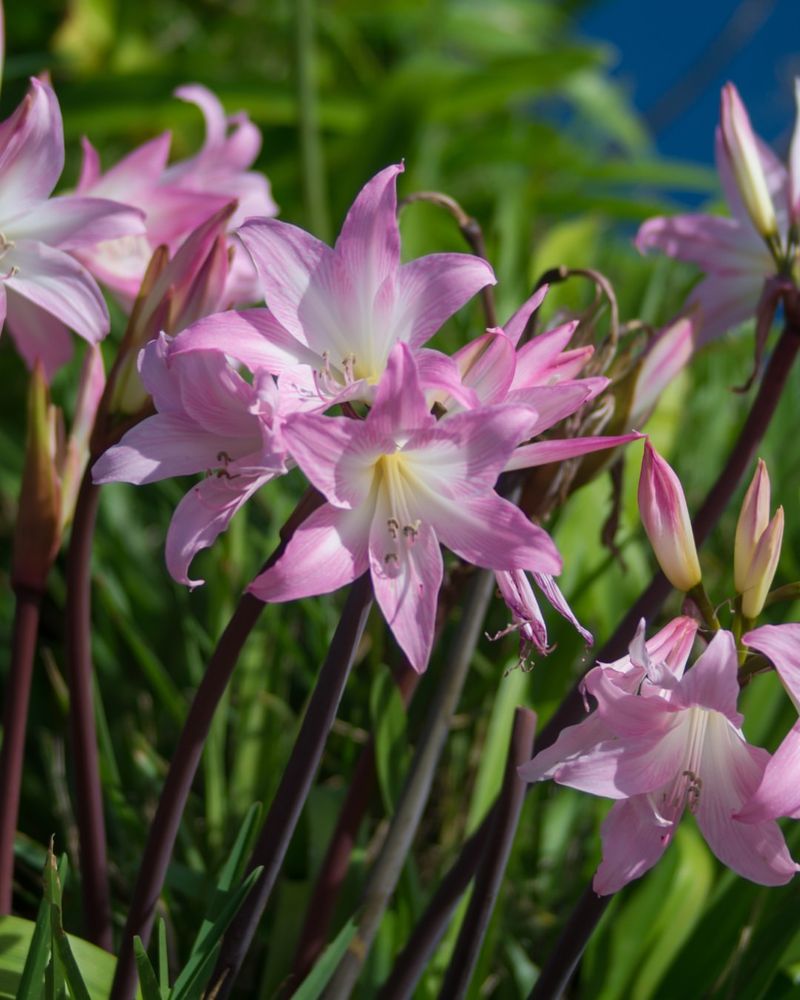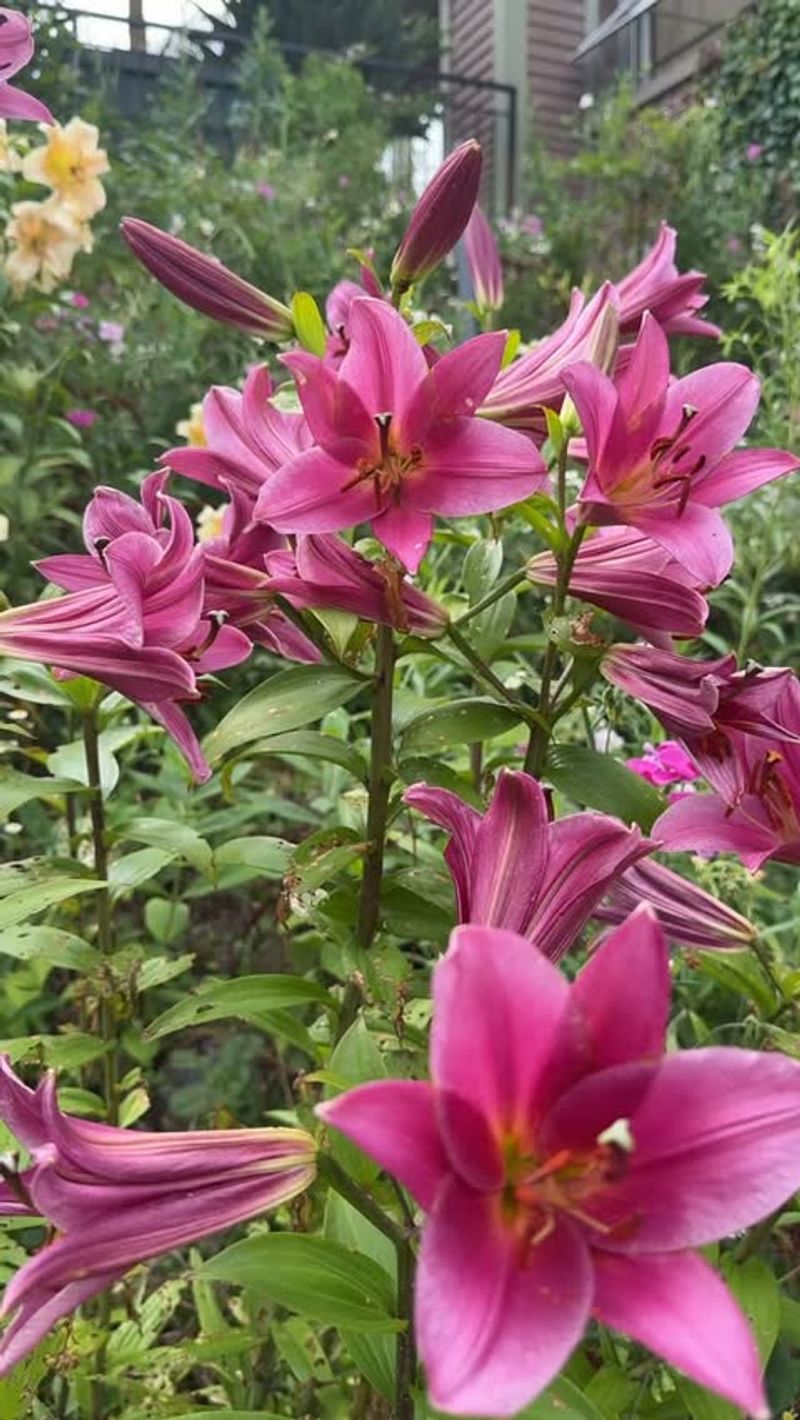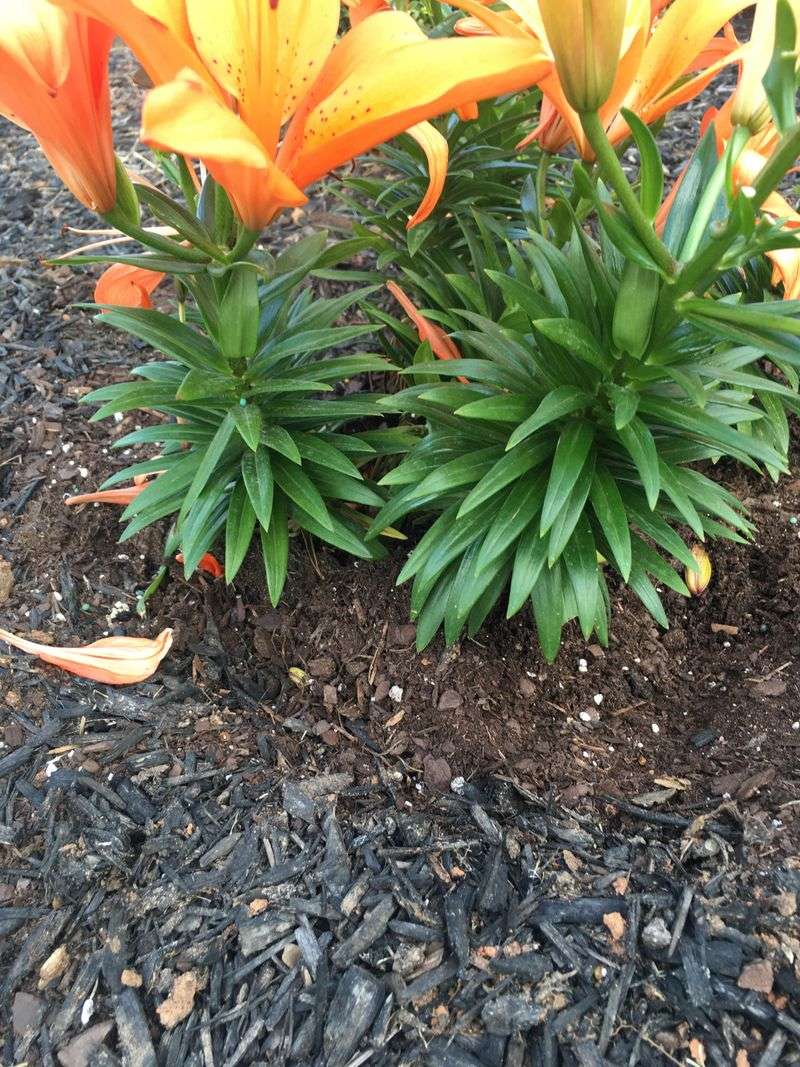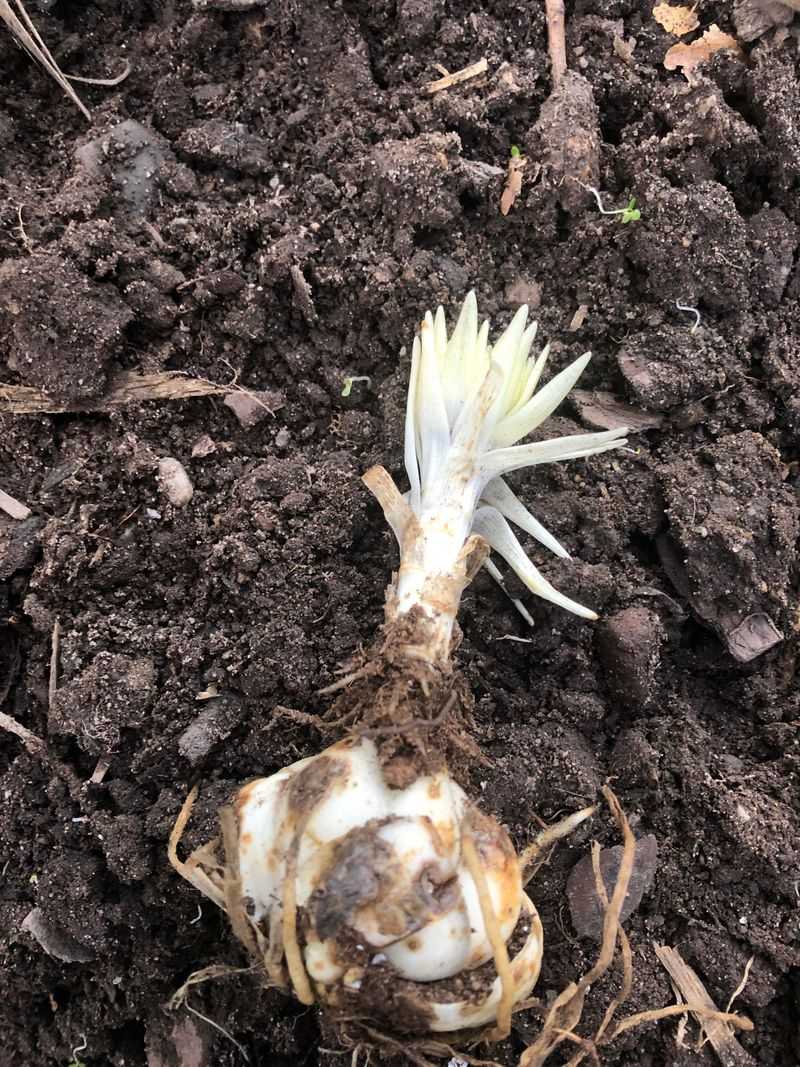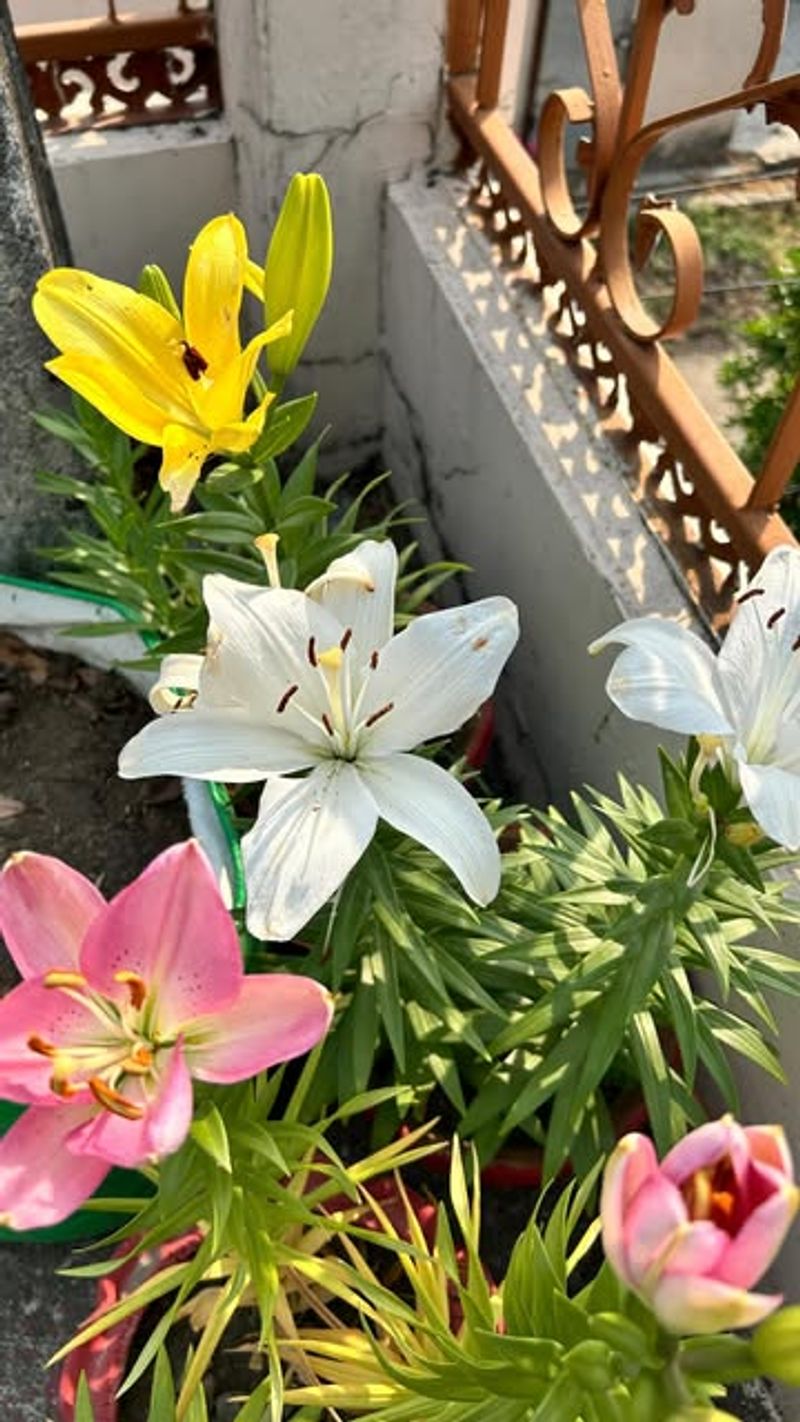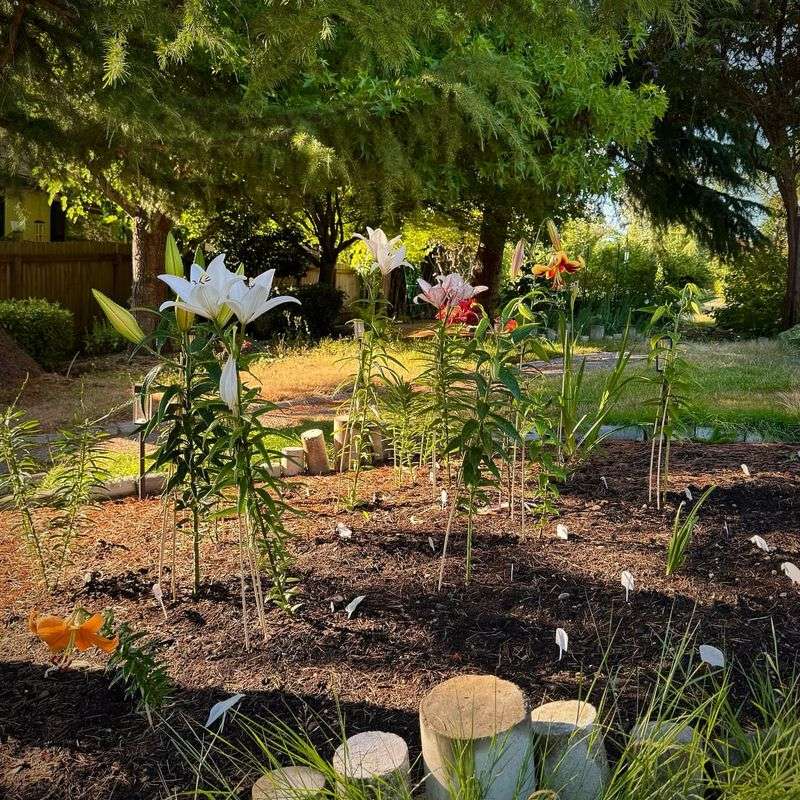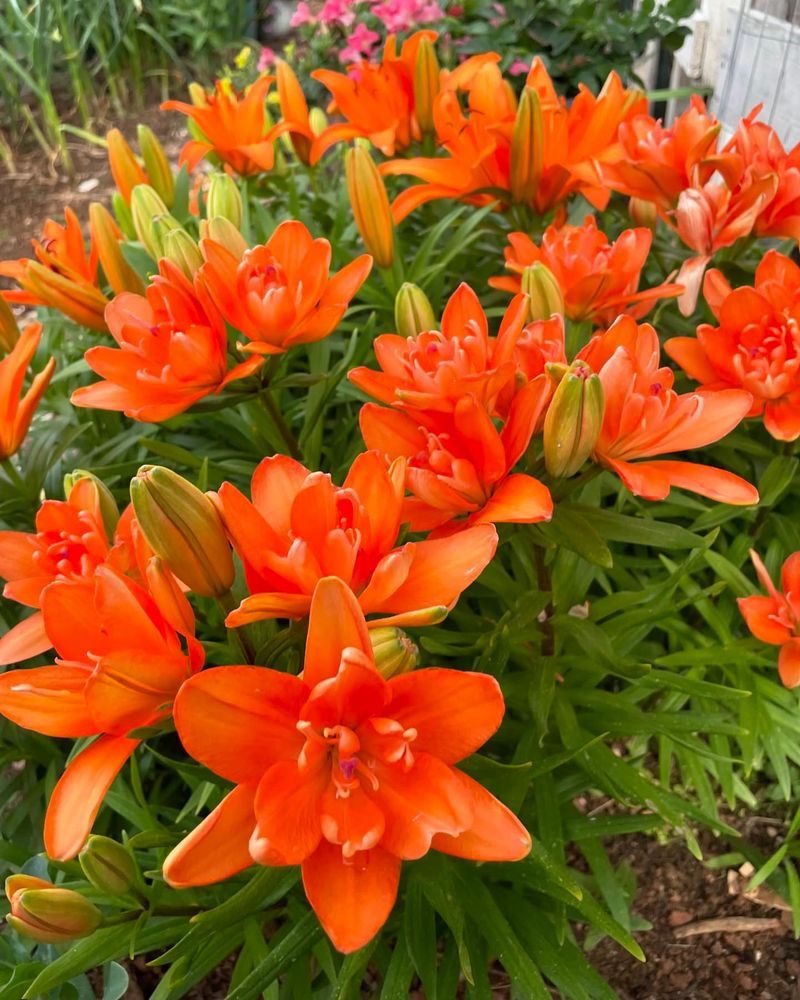Lilies are some of the most stunning flowers you can grow in your garden, with their bold colors and sweet fragrance. Growing healthy lilies isn’t just about planting them and hoping for the best – they need specific care throughout the seasons.
Following these expert-approved lily care tasks will help your flowers bloom bigger, brighter, and more abundantly next year.
1. Choose The Right Planting Location
Most lilies thrive in spots with morning sun and afternoon shade. The bright sunshine helps them grow strong stems, while protection from harsh afternoon rays prevents their delicate blooms from fading too quickly.
Sandy, well-draining soil is essential since lily bulbs will rot in waterlogged ground. Before planting, check your soil drainage by digging a small hole and filling it with water. If it doesn’t drain within a few hours, add compost or sand to improve it.
2. Plant Bulbs At The Proper Depth
Planting depth can make or break your lily display next season. As a rule of thumb, bury lily bulbs three times deeper than their height. For most varieties, this means about 6 inches deep.
Deeper planting helps anchor the tall stems and keeps the bulbs cool during summer heat. Remember to point the pointy end up and the flat side with roots down. Space bulbs about 8-12 inches apart to give them room to multiply over the years.
3. Apply Mulch For Protection
A good layer of mulch works wonders for lily bulbs year-round. In summer, mulch keeps the soil cool and moist, exactly how lily roots like it. During winter, that same layer insulates the bulbs from freezing temperatures that could damage them.
Spread 2-3 inches of organic mulch like shredded bark, straw, or pine needles around your lilies. Just keep it from touching the stems directly to prevent rot and fungal problems that could destroy your beautiful plants.
4. Water Consistently But Carefully
Lilies need consistent moisture to develop strong stems and big blooms. During the growing season, provide about an inch of water weekly if it doesn’t rain. The key is keeping soil moist but never soggy.
Watering at the base rather than overhead prevents fungal diseases that can devastate your lilies. Consider installing a soaker hose or drip irrigation system for perfect moisture levels. Reduce watering after flowering when the plants begin to yellow and go dormant.
5. Feed With The Right Fertilizer
Lilies are hungry plants that need proper nutrition to produce spectacular blooms. Start with a balanced, slow-release fertilizer (like 10-10-10) when spring growth appears. This early feeding helps develop strong stems and lush foliage.
Once buds form, switch to a high-phosphorus fertilizer (like 5-10-5) to encourage bigger, more colorful flowers. Always water before and after fertilizing to prevent root burn. Avoid high-nitrogen fertilizers that promote leafy growth at the expense of flowers.
6. Stake Tall Varieties Early
Nothing’s more heartbreaking than finding your gorgeous lily stems snapped after a summer storm. Many lily varieties grow 3-6 feet tall with heavy blooms that make them top-heavy and prone to toppling.
Place stakes or supports when plants are just 6-8 inches tall, before they need them. This prevents damage to the developing root system. Bamboo stakes work well, paired with soft plant ties that won’t cut into the stems. For a natural look, use branched twigs that the lilies can grow through.
7. Remove Faded Flowers Promptly
Deadheading spent lily blooms isn’t just about keeping your garden tidy. When you remove faded flowers before they form seed pods, you redirect the plant’s energy back to the bulb instead of seed production.
Snip off just the flower head with clean, sharp scissors or pruners. Leave the stem and all the foliage intact, as they continue photosynthesizing and feeding the bulb. This simple practice results in stronger bulbs that produce more abundant flowers next season.
8. Monitor And Treat For Pests
The dreaded red lily beetle can strip your plants bare in days if left unchecked. These bright scarlet insects and their larvae specifically target lilies and can completely destroy a collection if not controlled.
Check the undersides of leaves regularly during the growing season. Remove beetles and larvae by hand or treat with neem oil for organic control. For severe infestations, consider insecticidal soaps or systemic insecticides labeled for ornamental plants. Catching pest problems early saves your lilies from destruction.
9. Watch For Disease Symptoms
Botrytis blight and viral diseases can quickly spread through your lily collection. Brown spots on leaves, distorted growth, or strange color streaking are warning signs that shouldn’t be ignored.
Remove and destroy (don’t compost) any infected plant parts immediately. Improve air circulation by spacing plants properly and avoiding overhead watering. For fungal issues, apply a fungicide labeled for ornamental bulbs according to package directions. Prevention through good garden hygiene is your best defense.
10. Let Foliage Die Back Naturally
After your lilies finish blooming, resist the urge to cut them back immediately. Those green leaves are working hard to store energy in the bulbs for next year’s show.
Allow all foliage to yellow and wither naturally, which typically takes 4-6 weeks after flowering. Only then should you cut stems to ground level. If yellowing foliage bothers you visually, plant lower-growing perennials in front of your lilies to hide the aging leaves while they complete their important work.
11. Divide Overcrowded Clumps
Over time, lily bulbs multiply underground, forming dense clumps that compete for nutrients and water. This competition results in smaller flowers and weaker stems if left unchecked.
Every 3-5 years, dig and divide lily bulbs in early fall after foliage has died back. Gently separate the bulbs, keeping as many roots intact as possible. Replant immediately, giving each bulb proper spacing. This rejuvenation process leads to more vigorous growth and better flowering in subsequent seasons.
12. Prepare For Winter Protection
Winter protection can mean the difference between thriving lilies and losing your collection to freezing temperatures. In colder regions (zones 3-6), apply a thick layer of mulch after the ground freezes.
Use 4-6 inches of straw, pine needles, or shredded leaves over the lily bed. This insulating layer prevents the freeze-thaw cycles that can push bulbs out of the ground and damage them. In spring, gradually remove the mulch as new growth emerges to prevent stem rot.
13. Consider Container Growing
Growing lilies in containers offers advantages for challenging garden situations. Pots allow perfect drainage control and the ability to move plants for optimal sun exposure or protection from harsh weather.
Choose deep containers at least 12 inches in diameter with ample drainage holes. Use high-quality potting mix mixed with some sand for drainage. Container-grown lilies need more frequent watering and fertilizing than garden plants. In cold climates, move pots to an unheated garage or basement for winter.
14. Label Your Varieties
Proper labeling prevents the disappointment of forgetting which varieties performed best or where exactly you planted those special bulbs. When lilies die back completely, they leave no trace above ground until spring.
Use permanent markers on weather-resistant labels pushed deeply into the soil near each variety. Record planting dates, bloom times, and performance notes in a garden journal. This simple organization helps you make better decisions about which varieties to add or which might need special attention next season.
15. Plan For Succession Planting
Smart gardeners extend their lily season by planting varieties that bloom at different times. Asiatic lilies flower first in early summer, followed by Trumpets and Orientals in mid to late summer, creating months of continuous color.
Research bloom times when purchasing bulbs and plant accordingly. Group early, mid, and late-season varieties in separate areas of your garden. This succession planting strategy ensures you’ll enjoy lily blooms from June through September instead of just a brief two-week show.

